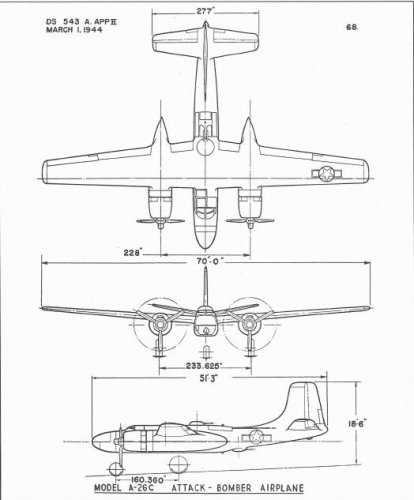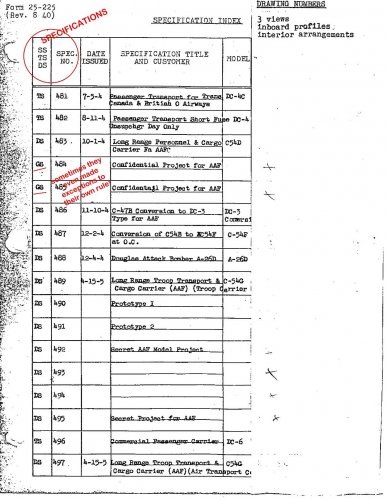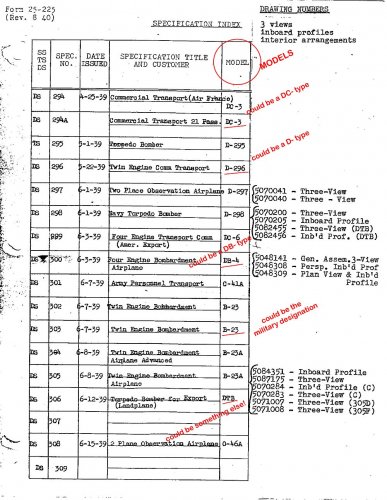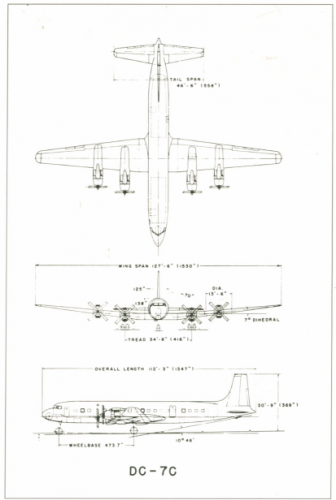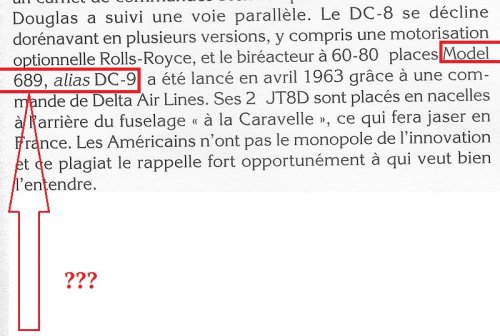hesham said:
also to proof my word about DS meant the Specification number and not Douglas
company designation
PROOF? Of what? Stop this. You didn't prove anything. Proof is when you can provide a whole bunch of conclusive and repeated elements, not isolated bits here and there. Let me remind you that your initial argument was that part of the list was Specifications while another part was Models. Now you're saying you want to prove they were all Specifications? You are a bundle of confusion...
I admit I also made the mistake of using the word "Models" (sounds more catchy, eh?) when referring to the early numbers recently discovered, but they were not. The Douglas numbers were first and foremost
Specification numbers. Always were. From the earliest aircraft to the latest MDD products. Prefixes varied (DS, TS, etc.) but they were not considered as models. "DC-3", "DB-4", "DF", "M-4", these were models. Military designations too were used as "Models": "O-2", "B-23", "C-47", etc.
Now why do we sometimes get "D-" Models"? Because when the aircraft design was considered for production and didn't fit in the DC-, DB- or other model series, they used the prefix D- followed by the Specification number. That's why the aircraft built to Detail Specification DS-557 became simply the Model D-557. Now why did they drop the "D-" from time to time (e.g. Model 1317), I don't know. What matters is that these Model number were DERIVED from the Specification number, but the two designations were distinct. One followed the other. Not all DS-, TS-, SS-, GS- Specifications led to a model.
The Model DC-3 that was built according to Detail Specification DS-294 was designated DC-3-294... The DC-3A that was built according to Detail Specification DS-405 was designated DC-3A-405... The DC-6 that was built according to Detail Type Specification DTS-477B was designated DC-6-477B... The DC-6B that was built according to Detail Specification DS-1198 was designated DC-6B-1198... It always worked like that.
hesham, you are kind of forcing me to attach part of a document I'm not supposed to share... but I'll post just two page of it as an example. I think it's necessary because otherwise you will go on and on about this nonsense. Here is an extract from the Douglas Specifications List (I don't have it in full, only parts of it) and you'll see clearly the Specification columns and the Model column which is distinct.

